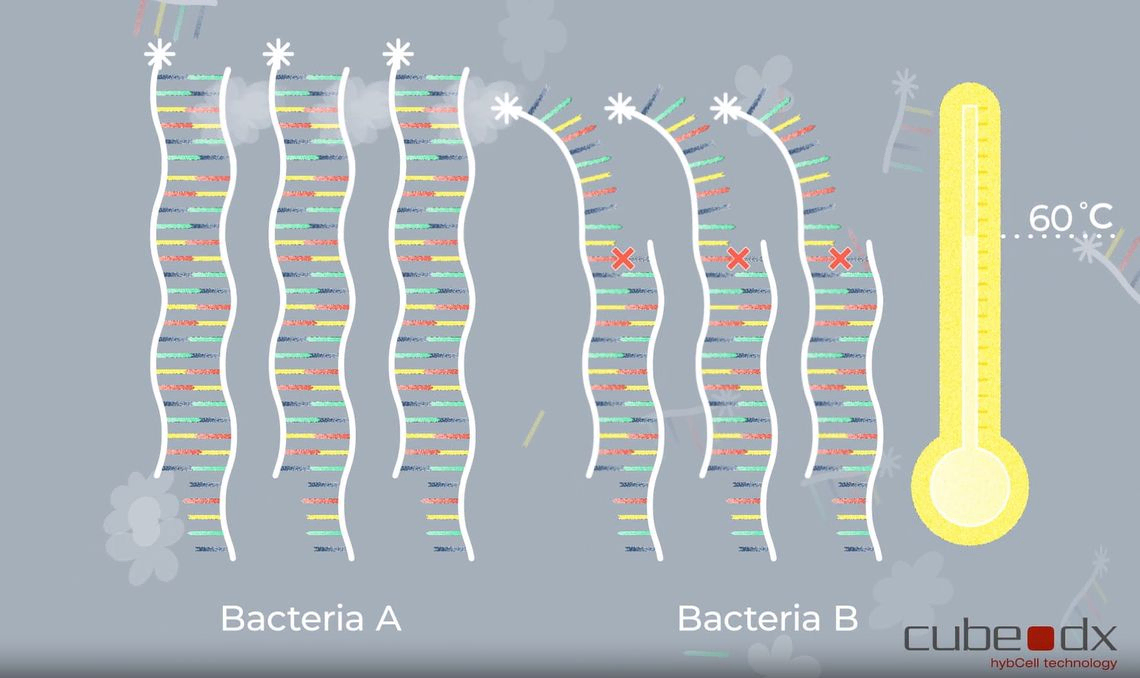
31/01/2024 by Cube Dx
compact sequencing: Workflow for Rapid Pathogen Detection in Infectious Disease Diagnostics
Conventional PCR, sequencing, and more: There are several methods for detecting pathogens in a blood sample, such as in cases of sepsis. Regardless of the method used, it is critical to identify the pathogen as quickly as possible. Early identification allows clinicians, in collaboration with infectious desease specialists, to initiate targeted therapy, thereby improving treatment quality, reducing side effects, and increasing chances of survival. Cube Dx's compact sequencing combines two essential features of infectious disease diagnostics in a single workflow: a broad test panel and rapid results. In this interview, Christoph Reschreiter, CEO and co-founder of Cube Dx, discusses the uniqueness of the technology and how it helps laboratories detect positive results in samples within approximately 3 hours...
...want to read more? Click on picture or heading.
compact sequencing is a combination of screening PCR followed by a cartridge-based test. How can we imagine this process?
In infectious disease diagnostics, we use screening to identify a positive sample from a specimen set. The workflow then provides more detailed information about the infection. Taking a bacterial infection as an example, if it is identified in the screening, it is further resolved in the cartridge – our hybcell. This allows us to identify the infection as E. coli, Staphylococcus, etc. Technically, either RNA and/or DNA of the target parameters are detected.
For those in the field of infectious disease diagnostics: How does this process work exactly?
The process starts with a variation of PCR. Forward and reverse primers are used to amplify target sequences, if present in the sample. The reverse primer is labeled with a fluorescent dye. In the second step, the amplicon is transferred to the hybcell – our cylindrical microarray. Different probes, short DNA fragments, are presented on the surface of the hybcell. These probes are locked to the sequences of the target organisms. If the target organism was present in the sample and its DNA was amplified during the PCR, these amplified DNA sequences bind to the probes. This is followed by an enzymatic reaction along the bound amplicons and a wash step to remove any amplicons that do not perfectly match the probes. A fluorescence scan then generates a pattern of the hybcell surface, providing insight into the original sample.
compact sequencing excels in infectious disease diagnostics, especially in cases of sepsis. What other areas does the testing procedure cover?
We currently use the technology for comprehensive molecular detection of bacteria (based on 16S) and fungi (based on 28S) in connection with sepsis and other serious infections. In addition, we offer broad monitoring of mutations in the S gene of SARS-CoV-2. Originally developed for testing human samples, compact sequencing is now being adapted for wastewater monitoring. However, there are many potential applications where rapid, cost-effective screening is needed to provide more information about the specific manifestation. This applies not only to infectious disease diagnostics but also to companion diagnostics or human genetics.
The technology was originally developed for companion diagnostics. How did Cube Dx get involved?
At that time, the application focused on determining mutation ratios for specific mutations from cells in a biopsy of cancer tissue. This ratio is critical for estimating the efficacy of certain drugs and ruling out adverse side effects. What makes these applications unique is the need to detect individual mutations (Single Nucleotide Polymorphism) and determine a ratio of mutated to non-mutated cells (e.g., 30% mutated). We have combined this requirement with the ability to perform very broad testing.
One of the most common standard technologies in clinical laboratories is conventional PCR and sequencing. How is compact sequencing different from these technologies?
PCR offers a variety of tests for different areas, including infectious disease diagnostics. PCR is sensitive and easy to use, but its drawback is that it is limited to a few results per sample, typically 1-6. This means that it is very limited in clarifying serious bacterial or fungal infections such as sepsis or pneumonia.
Sequencing decodes a gene segment or an entire genome in its sequence, theoretically detecting all pathogens. However, these methods are more complex to use and do not provide timely results in routine clinical settings.
Compact sequencing is a combination of broad testing – for example, we currently detect 100 different bacteria, fungi, and resistance genes in a single test – and rapid results. In our case, a result is available about three hours after blood collection.
One of the unique features of compact sequencing is that it follows a single workflow. What does that mean for laboratories?
For laboratories, this means savings in training and personnel. Many applications can be covered even with fewer staff members, increasing reliability and ease of use.
What can lab professionals specifically expect from simplified handling?
The two-step process of compact sequencing starts with a simple and pre-configured PCR, followed by a cartridge-based test for identification. Both steps are fully automated for ease of use. The result is a clear report that highlights all positive results. No interpretation, such as graphs or links, is required. This makes compact sequencing an ideal solution for infectious disease diagnostics.

